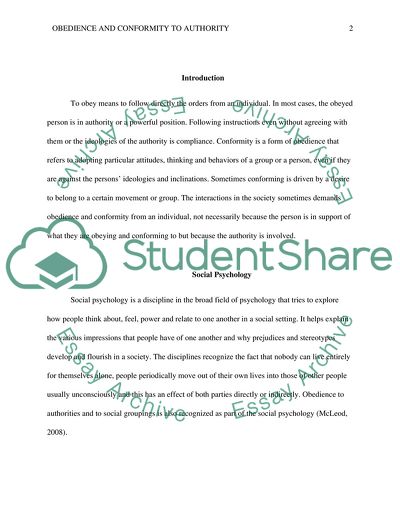Cite this document
(Obedience and Conformity to Authority Essay Example | Topics and Well Written Essays - 2000 words, n.d.)
Obedience and Conformity to Authority Essay Example | Topics and Well Written Essays - 2000 words. https://studentshare.org/psychology/1818729-social-psychology-obedience-and-conformity-is-social-identity-theory-influential
Obedience and Conformity to Authority Essay Example | Topics and Well Written Essays - 2000 words. https://studentshare.org/psychology/1818729-social-psychology-obedience-and-conformity-is-social-identity-theory-influential
(Obedience and Conformity to Authority Essay Example | Topics and Well Written Essays - 2000 Words)
Obedience and Conformity to Authority Essay Example | Topics and Well Written Essays - 2000 Words. https://studentshare.org/psychology/1818729-social-psychology-obedience-and-conformity-is-social-identity-theory-influential.
Obedience and Conformity to Authority Essay Example | Topics and Well Written Essays - 2000 Words. https://studentshare.org/psychology/1818729-social-psychology-obedience-and-conformity-is-social-identity-theory-influential.
“Obedience and Conformity to Authority Essay Example | Topics and Well Written Essays - 2000 Words”. https://studentshare.org/psychology/1818729-social-psychology-obedience-and-conformity-is-social-identity-theory-influential.


